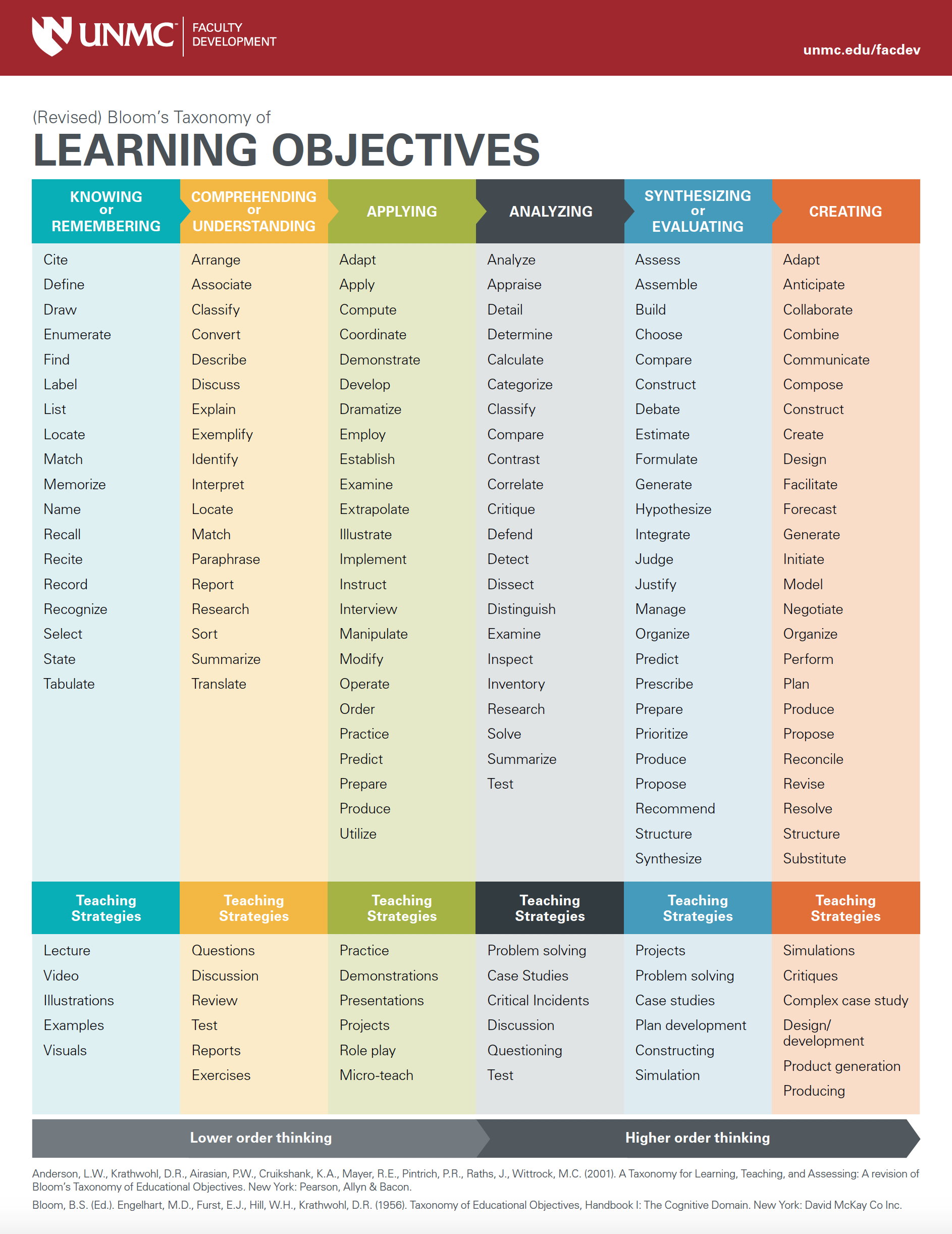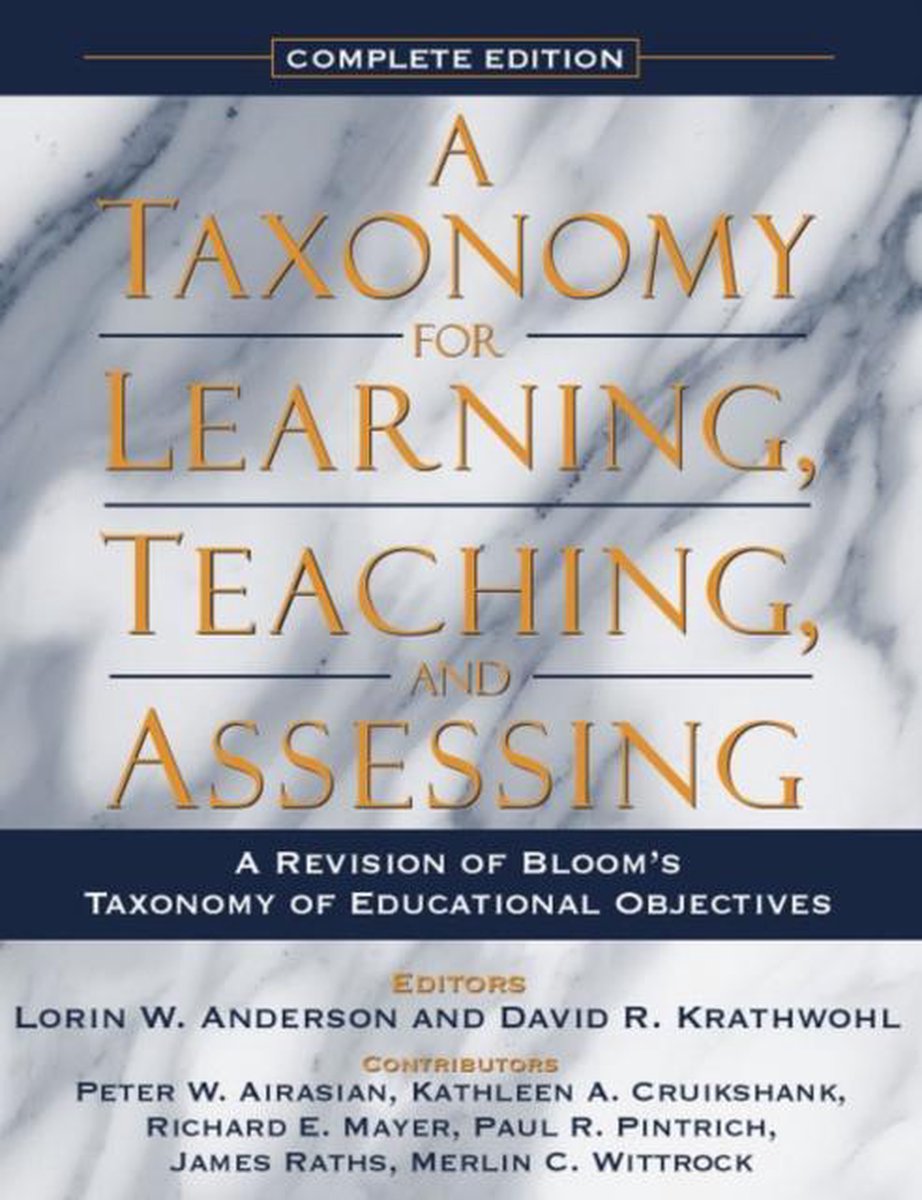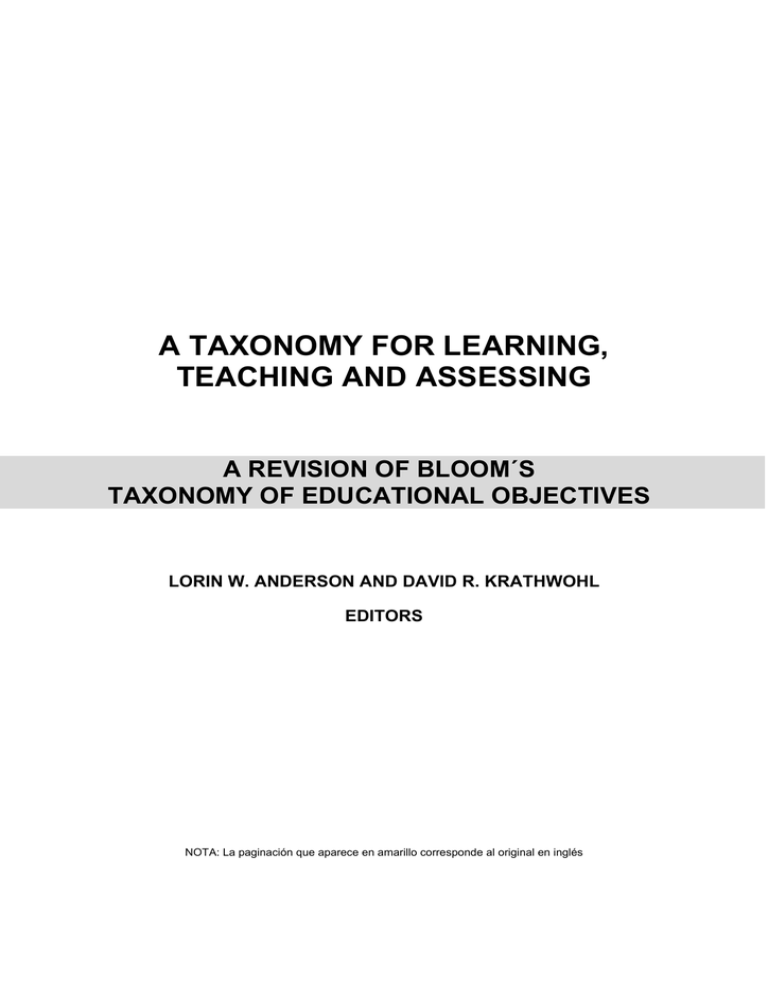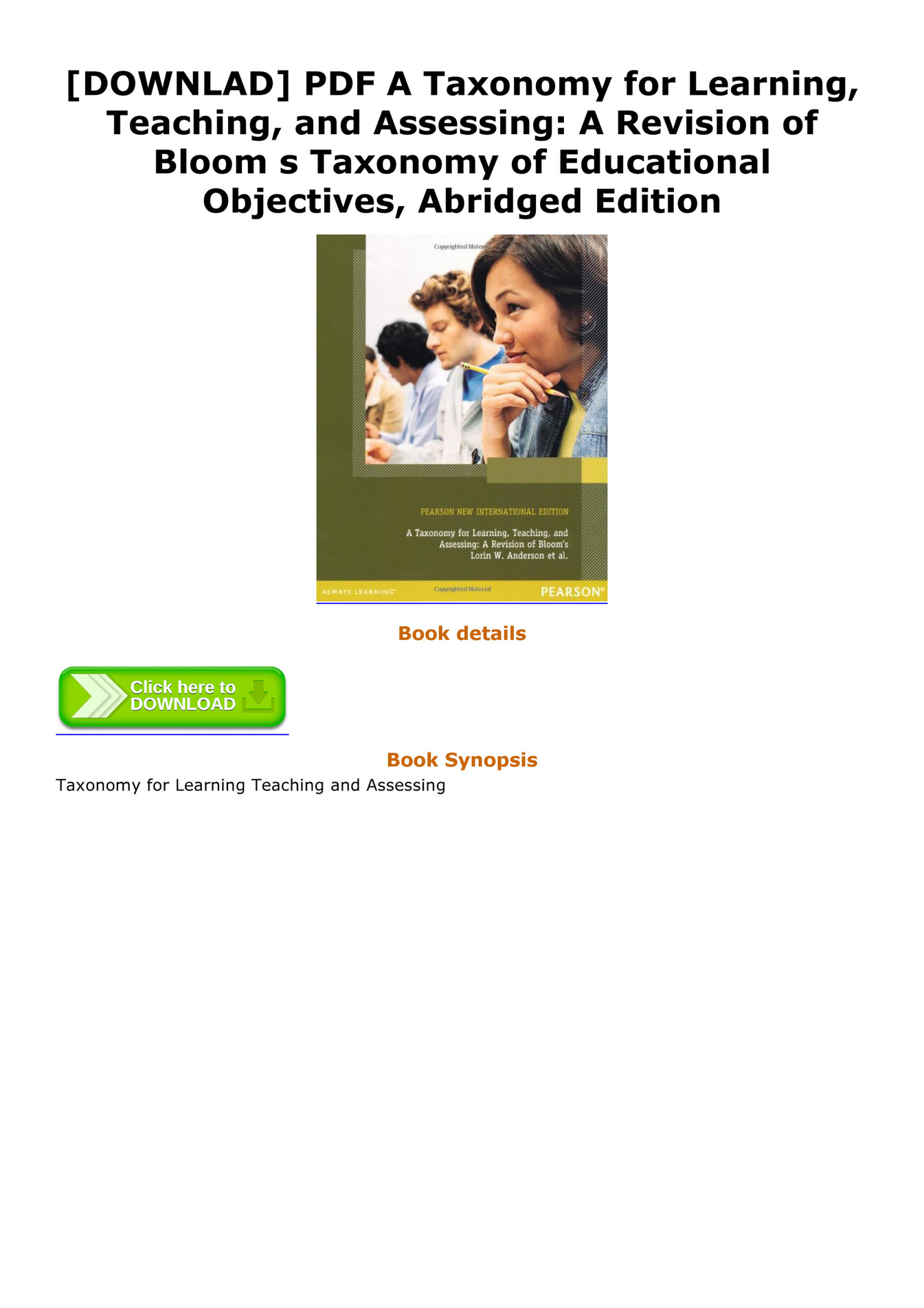
Bloom’s Taxonomy UM3D Instructional Impact Blog
An extraordinary group of cognitive psychologists, curriculum specialists, teacher-educators, and researchers have developed a two-dimensional framework, focusing on knowledge and cognitive.

ebook library A Taxonomy for Learning Teaching and Assessing A Rev…
The Cognitive Domain: The following chart includes the two primary existing taxonomies of cognition. Please note in the table below, the one on the left, entitled Bloom's, is based on the original work of Benjamin Bloom and others as they attempted in 1956 to define the functions of thought, coming to know, or cognition.

A Taxonomy for Learning, Teaching, and Assessing
Anderson and Kratwohl (eds.) describe a taxonomy of learning and therefore teaching and assessing. Based on the original work of Bloom (1956) they develop further his ideas. Whereas Bloom described a taxonomy of the cognitive process, the new book introduces a 2nd dimension, and classifies the knowledge as such.

(PDF) A Model of Learning Objectives A Taxonomy for Learning, Teaching
Learning taxonomy activities provides a framework determining order and and clarifying order thinking learning skills objectives. as a mix of concrete and abstract knowledge. The Cognitive Process to of categories Dimension Anderson represents and Krathwohl a continuum of increasing nineteen cognitive complexity—from cognitive processes

PPT A Taxonomy for Learning, Teaching and Assessing A Revision of
Drawing heavily from Bloom's Taxonomy, this new book helps teachers understand and implement a standards-based curriculum. An extraordinary group of cognitive psychologists, curriculum specialists, teacher-educators, and researchers have developed a two-dimensional framework, focusing on knowledge and cognitive processes, that defines what students are expected to learn in school.

Accents A Taxonomy For Learning Teaching And Assessing Poshmark
A group of cognitive psychologists, curriculum theorists and instructional researchers, and testing and assessment specialists published in 2001 a revision of Bloom's Taxonomy with the title A Taxonomy for Teaching, Learning, and Assessment.

Bloom's Taxonomy for teaching and assessing projectbased learning in
A taxonomy for learning, teaching, and assessing a revision of Bloom's Taxonomy of educational objectives Complete ed. by Lorin W. Anderson, David R. Krathwohl, Peter W. Airasian, Kathleen A. Cruikshank, Richard E. Mayer, Paul R. Pintrich, James D. Raths, and Merlin C. Wittrock ★★★★★ 5.00 · 1 Rating 27 Want to read 1 Currently reading 2 Have read

Bloom's Taxonomy of Educational Objectives
xxix, 352 pages : 25 cm This revision of Bloom's taxonomy is designed to help teachers understand and implement standards-based curriculums. Cognitive psychologists, curriculum specialists, teacher educators, and researchers have developed a two-dimensional framework, focusing on knowledge and cognitive processes.

A Taxonomy for Learning, Teaching and Assessing A Revision of Bloom’s
Download Citation | On Jan 1, 2001, Anderson LW and others published A Taxonomy for Learning, Teaching, and Assessing: A Revision of Bloom's Taxonomy of Educational Objectives | Find, read and.

A Taxonomy for Learning, Teaching, and Assessing A Revision of Bloom's
A taxonomy for learning, teaching, and assessing: A revision of Bloom's Taxonomy of educational objectives. New York: Longman. Google Scholar Girod, G. R. (2002). Connecting teaching and learning: A handbook for teacher educators on teacher work sample methodology. (ERIC Document: 463282). Washington, DC: Library of Congress

Bloom’s Taxonomy can be a powerful tool to transform teaching and
A Taxonomy for Learning, Teaching, and Assessing: A. (PDF) 1 A Taxonomy for Learning, Teaching, and Assessing: A Revision of Bloom's Taxonomy of Educational Objectives (PDF) Anderson & Krathwohl 2009 • 336 Pages • 32.46 MB • English Posted March 22, 2021 • Submitted by ashton.stehr Facebook Pinterest WhatsApp Buy on Amazon Explore PDF

PPT A Taxonomy for Learning, Teaching and Assessing A Revision of
This study examines the implementation process of the polytechnic curric-ulum with the objectives of determining the current level of practices in learn-ing/teaching material design, in delivering curriculum content, in assessing stu-dents and its effect on students' competence development.

Taxonomy for Learning, Teaching, and Assessing, A
Lorin W. Anderson, David R. Krathwohl Longman, 2001 - Education - 352 pages Embodying advances in cognitive psychology since the publication of Bloom's taxonomy, this revision of that framework.

Lorin W. Anderson, David R. KrathwohlA taxonomy for learning teaching
Embodying advances in cognitive psychology since the publication of Bloom's taxonomy, this revision of that framework is designed to help teachers understand and implement standards-based curriculums as well as facilitate constructing and analyzing their own. A revision only in the sense that it builds on the original framework, it is a completely new manuscript in both text and organization.

A TAXONOMY FOR LEARNING, TEACHING AND ASSESSING
Taxonomy for Learning, Teaching, and Assessing as soon as possible. This four-year-old book updates and revises Benjamin Bloom's famed Taxonomy of Educational Objectives : Handbook I: Cognitive Domain (1956) and its well-known categories: knowledge, comprehension, appli-cation, analysis, synthesis, and evaluation. Bloom's classic taxonomy is on

Caleb DOWNLAD PDF A Taxonomy for Learning Teaching and Assessing A
A Taxonomy for Learning, Teaching and Assessing: A Revision of Bloom's Taxonomy of Educational Objectives edited by Lori Anderson and David Krathwohl, is a work that attempts to refocus educators' attention on Bloom's Taxonomy while incorporating new knowledge and thought into the original Handbook. (Preface, xxii).